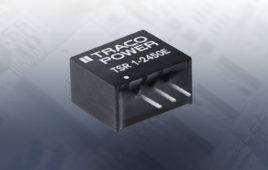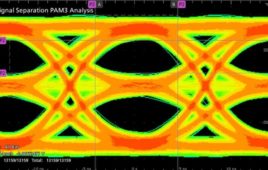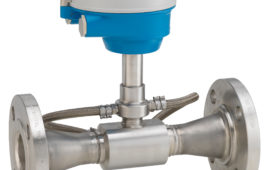Tantalum (Ta), a hard, blue-gray, lustrous metal, comprises just 8 × 10-9% of the universe. It is fifteen times less plentiful than gold. However, it is far more abundant in the earth’s crust, and it is feasible to extract in the small quantities necessary for electronic components.
On the periodic table Tantalum has atomic number 73. It is highly corrosion-resistant and inert, suitable for laboratory and medical equipment. Tantalum is also used as the parent material to form a dielectric layer in a capacitor, creating a rather thin layer having high permittivity. With small size, high capacitance and great durability, tantalum electrolytic capacitors find application in small upscale devices such as computers, cell phones, DVD players and digital cameras.

Tantalum capacitors are one of the three types of electrolytics. The others are aluminum and niobium. All electrolytics are polarized devices whose anode (+) acquires an insulating oxide layer when voltage is first applied. This dielectric layer is quite thin, a characteristic that makes for high capacitance in a small package. An electrolyte covers the surface of the oxide layer to serve as the cathode (-).

Like other electrolytics, tantalum capacitors cannot tolerate reverse polarity – the dielectric layer is destroyed in short order leaving a highly conductive current path, and the device may explode. Voltage spikes will do the same thing. (An exception is the bipolar electrolytic version with its unique construction, basically two polar electrolytics connected in series at their negative terminals. They are usually twice as large as a polar electrolytic for the same voltage and capacitance value.)
To increase the surface area, tantalum capacitor anodes are often sintered or etched. This has the effect of boosting the capacitance still more. One type of high-capacitance tantalum capacitor is constructed by sintering and pressing tantalum powder into a pellet, which forms the anode. The oxide layer that becomes the dielectric is tantalum pentoxide and the cathode is generally made of a solid manganese dioxide electrolyte.

As with other capacitors, tantalum electrolytics exhibit various qualities and parameters that must be considered in the design phase of a project:
Capacitance value
Rated voltage
Surge/transient voltage
Reverse voltage
Impedance
Equivalent series resistance and heat dissipation
In-circuit ripple current
Leakage current
Dielectric absorption
Form factor
As you’d expect, these and other properties can be found in manufacturer data sheets.
The post Basics of tantalum electrolytic capacitors appeared first on Test & Measurement Tips.
![]()
Filed Under: Capacitors, Test & Measurement Tips




